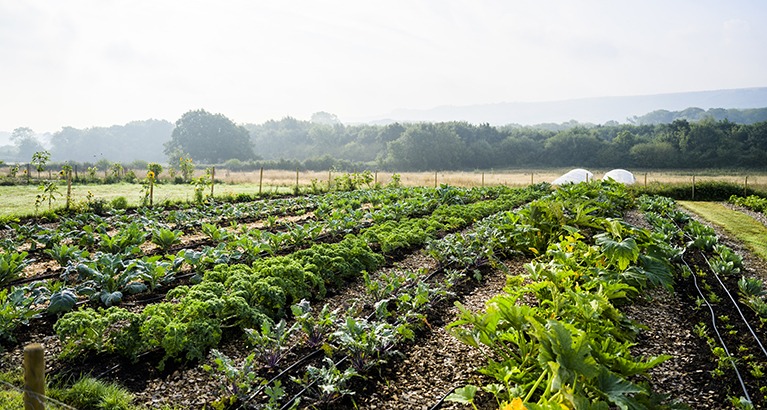
Society must shift its focus beyond sustainability to embrace regeneration, and better clarity in regenerative terminology would be a vital step, argues Christopher Marquis, Sinyi Professor of Chinese Business at Cambridge Judge Business School.
Current approaches to sustainability have largely focused on minimising negative impacts through a ‘do no harm’ mantra, but deep crises such as climate change, inequality and biodiversity loss “indicate that our systems require a complete overhaul”, Christopher writes in an article in Stanford Social Innovation Review.
“While a balance among economic, societal, and environmental factors may have been feasible decades ago, we need to recognise that to meet these challenges, maintenance or even mere repair is not enough. We must shift our focus from sustainability to regeneration.”
While a balance among economic, societal, and environmental factors may have been feasible decades ago, we need to recognise that to meet these challenges, maintenance or even mere repair is not enough. We must shift our focus from sustainability to regeneration.
Regeneration needs a fundamental business model shift
While the idea of regeneration typically describes agricultural practices such as crop rotation to rejuvenate soil, when extended to business the goal of regeneration “is to make systems better, to give back more than is taken, to replenish the planet’s natural resources, and to render communities and society more equitable,” he says.
This will require a fundamental shift in business models, including a mindset shift ranging from how energy is produced to how products are manufactured and marketed. But companies that claim to embrace regeneration may adopt the term without rigour and thus confuse consumers and others.
Better terminology can help prevent exaggerated regeneration claims
That’s why regenerative terminology needs more clarity, or otherwise we invite companies to make exaggerated or otherwise inaccurate regenerative claims. Drinks and snacks giant Pepsi, for example, “trumpets a variety of stakeholder-oriented programmes under the moniker PepsiCo Positive, claiming commitments to sustainability in agriculture, labour in supply chains, and healthy food choices”, Christopher writes.
“While these programmes may deliver their intended value, they distract attention from the deleterious nature of the company’s business model: the sale of sugary beverages sweetened mainly with obesity-linked ingredients like high-fructose corn syrup, and snack foods formulated with ingredients to make them addictive.”
Private firms adopt certification systems
While government action to define regeneration would be welcome, some private businesses are already working to provide a better definition of the term.
For example, Dr. Bronner’s, known for its high-quality soaps, fosters relationships with farmers in India, Ghana and elsewhere in order to obtain regenerative organic and fair-trade certifications for its ingredients – and in the process introduced recycling techniques to convert waste into energy or new materials
This was followed by the establishment of the Regenerative Organic Alliance, which includes farmers as well as companies such as Dr. Bronner’s and Patagonia, to create a certification standard for regenerative agriculture that includes animal welfare, organic sustainability and social equity in their practices. Among other such certifications are:
- Land to Market Verified
- Certified Regenerative
- Regenified
- Ethos Regenerative Outcome Verification
Why we need to enhance public trust in regenerative techniques
“The idea of these certifications is to enhance public trust so consumers can easily identify generative brands while also fighting greenwashing by companies through greater transparency,” says Christopher.
“But beyond certification, it’s important that companies be more rigorous in identifying the true costs and benefits of their production.”
Brazilian personal-care company Natura is a leader in including clear accounting of its results across natural, social and human capitals, positive and negative, in an integrated profit-and-loss report. This provides a “comprehensive accounting of the types of value created (and extracted) by the company’s operations”, writes Christopher, including damage to land and waterways from harvesting natural ingredients.
The idea of these certifications is to enhance public trust so consumers can easily identify generative brands while also fighting greenwashing by companies through greater transparency.
Re-examining the way we’ve been doing agriculture for the past century
Research by Christopher as outlined in the Stanford Social Innovation Review article says that affluent nations underestimate our reliance on the planet’s resources in everyday decisions including the food we eat and the clothes we wear. While agribusinesses exacerbate soil degradation and environmental harm through chemical use and other practices, regenerative agriculture seeks to restore ecosystems through creation of new practices.
“Regenerative agriculture proponents ask, Is the way we’ve been doing it for the past century really the best way to do it? Or can we bring back traditional practices before the era of factory farming that were quite regenerative, innovate and find other practices that also restore systems, or even create new ones?”
A recent study cited by Chrisopher found that regenerative practices such as rotating different plant species and cropping systems in which the soil is not plowed or turned can significantly increase soil carbon levels, which benefits soil health while reducing carbon in the atmosphere.
Regenerative techniques are initially costly, but can reap rewards
In terms of cost, some regenerative agriculture practices such as letting soil sit fallow for periods can be expensive to initiate but require fewer input costs such as the expensive patented seeds and chemical pesticides and fertilisers used in traditional agriculture – and this helps farmers emerge from debt and into profit. An Indiana farmer who shifted his 7,000 acres away from genetically engineered corn and soy saved $500,000 in the first year.
New sources of revenue can also be spawned through regeneration. The Northern Great Plains Regenerative Grazing Project in Montana uses management plans that result in cattle grazing smaller plots of grass for shorter periods, which helps regrowth in each plot through longer rest periods.
“After a few seasons, carbon is returned to the soil and can be sold as offsets. Company leaders now follow the mantra ‘Soil is the new wind’, as soil regeneration can help sequester high levels of CO2 from our atmosphere and creates monetisible benefits for farms, ranches, and our food systems,” says Christopher.
Regeneration is not easy, but it is essential
Moving beyond sustainability to regeneration will surely not be easy or linear, Christopher concludes. “We need multifaceted action across many domains” and “wholesale rethinking of business models”.
“Such an effort may seem daunting, but without reorienting our systems and demanding that companies be accountable for the entire scope of their business, the future looks bleak,” he says. “However, if we follow regenerative approaches, a pathway toward a more sustainable, resilient, and equitable future for all can emerge.”
Related content
Christopher’s article “How regeneration is redefining business” appeared in the Stanford Social Innovation Review in Summer 2024.





